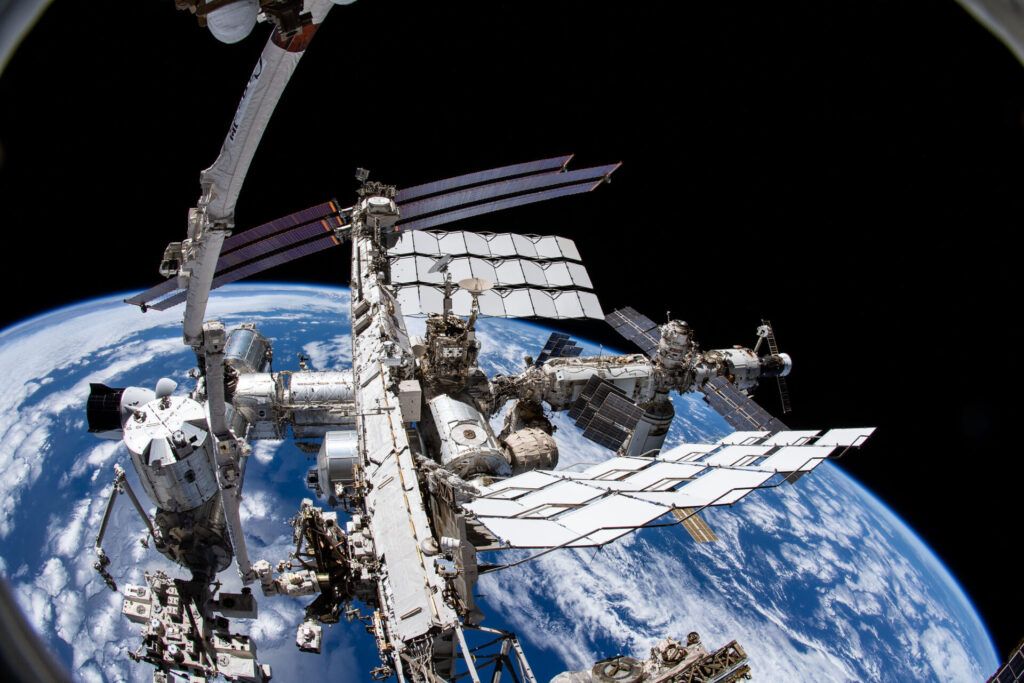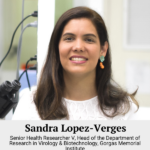How international labs could prevent leaks—and produce cutting-edge pathogen research
By Sandra Lopez-Verges | August 1, 2024
 The International Space Station Program "brings together" the international scientific research community. Credit: Thomas Marshburn/NASA. CC BY-NC-ND 2.0.
The International Space Station Program "brings together" the international scientific research community. Credit: Thomas Marshburn/NASA. CC BY-NC-ND 2.0.
Editor’s note: This article is part of a collection of expert commentaries. You can read the rest of the series here.
In recent years, there has been considerable discussion on what might cause future pandemics. What risks do climate change, other human impacts on the environment, or livestock agriculture create, for example? Some of these factors pose immensely complicated challenges for societies. Comparatively, addressing another possible source of a pandemic—a “leak” from a laboratory stemming from human error—is not as complex an undertaking. Good biosafety and biosecurity measures could easily prevent such an occurrence. But countries engaged in the costly competition to produce leading pathogen research can face resource constraints that make it difficult to do so.
International collaboration to create multinational biological research facilities—as has already occurred for research in physics and space science—could help improve biosecurity and biosafety around the world.
Many emerging and potential pandemic pathogens originate from subtropical and tropical countries with high population density, many of them being low middle-income to high middle-income countries. It is necessary for them to be prepared at all levels, including through highly competitive pathogen research. But without consistent budgets, scientific progress can stall. In Brazil, for example, researchers drew a connection between the growth rate of scientific publications and government investment. They found that as funding slumped beginning in 2009, Brazil saw its progress in a world ranking of scientific output begin to drop. Researchers have been hopeful that the trend is reversing.
Given unstable research funding in some countries, however, one might wonder how those running biosafety level (BSL) 2 to 4 laboratories, especially in middle-income to high middle-income countries, manage to comply with costly biosafety and biosecurity requirements, which include maintaining information security tools, meeting high security requirements, and performing critical maintenance procedures. Labs must also continuously train current and new researchers. The high standards labs must conform to are now doubly necessary, given a climate of increasing distrust of science worldwide. Researchers need to show that they are working for the global good in the safest and most ethical ways possible.
One solution to overcoming the funding shortfalls that could impact lab safety would be to encourage international collaboration. Recently, different international networks of experts have formed to increase technology transfer and capacity building. These are good starts. But another sort of collaboration that could help foster important, safe, and secure international pathogen research would be the creation of multinational facilities. These are not common in the biological or health sciences fields and are especially lacking in high-risk pathogen research. Multinational facilities—think CERN, the particle physics laboratory in Switzerland that serves as an international focal point for physics research or the International Space Station, which serves a similar role for space research–could allow countries to pool more funds and strengthen global research while at the same time ensuring high standards of biosafety and biosecurity.
This sort of science diplomacy could pay dividends beyond simply making research more affordable. In scientific areas such as nuclear and astronomical research, science diplomacy has played a crucial role in the creation of multinational laboratories that allow scientists around the world to work together in the same setting, increasing collaboration and trust among them, positively impacting the local community, and at the same time, producing cutting-edge research.
Together, we make the world safer.
The Bulletin elevates expert voices above the noise. But as an independent nonprofit organization, our operations depend on the support of readers like you. Help us continue to deliver quality journalism that holds leaders accountable. Your support of our work at any level is important. In return, we promise our coverage will be understandable, influential, vigilant, solution-oriented, and fair-minded. Together we can make a difference.
Keywords: Pathogens Commentary
Topics: Biosecurity
















All good. But it is clear that the weakest link in bio lab safety is not the building’s technology. It is the staffing — overwhelmingly students and young postdocs. Aside from the obvious — the young often consider themselves immortal and are often distracted by other tasks and each other — safety suits and gloves are a compromise between safety and comfort. It does not help that, for political reasons, we ignore the obvious: on a planet with more than 20 million square miles of land surface, the COVID pandemic started only a few miles (at most) from one of… Read more »